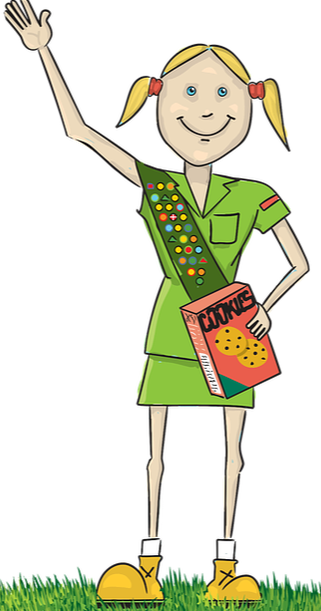I've worked with children, teens and young adults for 45 years and while I evaluated over 1200 clients in 24 years of private practice, it was the hundreds and hundreds of calls that I got from parents who wanted to ask me "just one question" that made me realize that many parents needed just the smallest amount of help to "fill-in-the blanks" in understanding their kids.
Many parents called back from time-to-time over the years and I respected their intelligence and resourcefulness in seeking what they thought they needed to know. I always, always gave them the time they needed to help them on their way. If I could spend 20 minutes on the phone to keep a kid from ending up in my office or someone else's, then all the better.
Anyway, I feel very compelled to make sure that, when I give you information, you have the most important points written down here where you can retrieve them when you need them. I don't expect you to be in a position to hear it all or to write it down during the show. Sure, I'd love for you to listen to the podcasts because there's a lot more information there, but most of the time, you're "on the run" and usually doing multiple things at once. I know. I was you once. I started my career as a teacher and just can't shake the need to teach.
In these show notes, I give you some of the basics of what we've discussed on the show. With that said, here are just some of the highlights from today's show:

Taking Your Kids to See Santa
If you have a child on the autistic spectrum or one with anxiety and/or sensory processing disorders (sensitivities to sound, crowds, lights, new experiences), consider the following with the full knowledge that I appreciate that this is a lot of "prep" work, but once there is a positive experience, it's a lot of collateral to take into the next situation.
- Rehearse: Review the concepts of masks and costumes. Kids under the age of 7, depending on their abilities and disabilities, frequently struggle with separating fantasy from reality. Costumes and masks are very frightening to them. For the very young and the very impacted, color a face on a paper plate and hold it up to your face and then, take it away. Cutting out the eyes and nose and repeat the process helps them to "concretize" the concept that you are still there, behind the mask.
- Create a social story: Social stories were created by Carol Gray to enhance the social skills of those on the autistic spectrum. They are very useful for all "kinds of kids" who need a "preview" of unfamiliar events. Make a very basic book (staple it together!) and review what it might be like to visit Santa's Helper at the mall. Present them with the sights, sounds and feelings they are likely to have. Find pictures of Santa's Helpers online to give give your kids a wide view of how they can look.
- Determine the "rules": Where will Momma stand? You don't have to sit on Santa's Helper's knee, you can stand next to him. When you want to go, give me the signal and we will go, no questions asked.
- Do a walk-through: Go to the mall. Go through the entrance and exit you will use when you actually go. Watch the other kids. The ones who scream and cry are likely to be younger than yours, so point that out. This might be upsetting, but let your child know that the kid is "safe", only afraid. Point out that maybe mother did not teach the kid about Santa's Helper, so he's afraid. "You know a lot about Santa's Helper, so you're ready".
- Review: As the time approaches for the agreed-upon event, review the social story, feelings and the rules.
- The Finale: Go when the crowd is light. Let your kid determine when s/he will approach Santa's Helper.
Please avoid saying, "You'll be fine". They may not feel fine, but they'll do it anyway. Let them know you have confidence in them that they'll do their best.
Please avoid telling them "Not to be afraid" and "Don't feel like that, there's nothing to be afraid of". Your experience is not your child's experience.
Two Things Not to do with Your Baby's Placenta
In an attempt to ease postpartum depression, women are cooking and eating their placentas or are sending them to companies that prepare capsules from them. Babies are contracting diseases from mother who has consumed the capsules.
There is no scientific evidence, whatsoever for this practice. Refer to this previous article I wrote regarding the practice.
After I wrote that article, I learned about the concepts surrounding Lotus Birth. This is another practice that has no scientific basis, but has some historical significance in aboriginal cultures who feel that the umbilical cord which connects baby to the placenta which was once connected to the uterus, has a spiritual or energy connection to baby and that the umbilical cord should determine, for itself, when to release.
Early American pioneers allowed the umbilical cord to fall off naturally as they thought have an open wound in unsanitary conditions would place their baby at risk of infection.
Professional organizations of obstetricians, neo-nataologists (doctors who care for newborns) and pediatricians strongly discourage the practice since once the child and the placenta are delivered (the placenta has its own birth process), it starts to decay and bacteria can move into baby's body.
On average, it takes 3 to 10 days for the umbilical cord to release and parents are toting around baby with its placenta connected to it. Parents are using essential oils and other strategies to reduce the smell.
Some clinicians (physicians and midwives) who attend to births wait about 60 seconds after the umbilical cord stops pulsing to cut it because the delay results in improved quality of blood for baby.
I offered some "basics" about the placenta, its function and how it is formed so that if/when someone you love is considering participating in these trends that you have information and can offered a deliverable, reasoned opinion instead of responding emotionally and losing credibility. This is a "big ticket" item and needs to be handled with care.
There is new data that suggests that when the placenta has "abnormal folds" that the baby does not receive sufficient nutrition resulting in autism.
As well, the placenta develops so quickly that it is vulnerable to mistakes which can lead to prematurity, low birth weight and pre-eclampsia (potentially fatal high blood pressure).
These and other "placenta" mistakes are called "great obstetrical syndromes" and do, indeed, pose serious challenges to mother and baby. They are difficult to predict and manage.
Knowing more about how the placenta develops and works will lead to in-utero treatment and intervention to reduce that catastrophic effects of autism and the great obstetrical syndromes. With this information, you can more meaningfully participate in your care of that of someone you love.
By the way, watching this episode of NOVA which features an hour-long film by Lennart Nilsson, your life will be changed forever. No hype. Just the truth. Click here to enjoy The Miracle of Life by Mr. Nilsson who passed away last January. If you search "The Miracle of Life by Lennart Nilsson", you'll find his rich body of work dating from the early-to-mid 1960s that documents conception and development of humans. Rest in peace, Mr. Nilsson. You've taught us so much.
The Girl Scouts of America recently issued a "warning" about the impact of parents who force their daughters to hug relatives. They say that "this could set the stage for unexpected emotional consequences".
They commented that children don't owe anybody affection just because they haven't seen them in a long time. Their concern is that your daughter may come to feel that she "owes" someone physical affection when they buy her dinner or done something nice for her later in life.
The point I agree with is that kids need to be given the choice to show or receive affection because it's a matter of respecting them. In reality, it's the screaming and resistance and ugliness that happens when kids are forced to hug and kiss grandma, grandpa, auntie and uncle. Ugh.
Here's the deal. Ask the kids if they want to hug their relatives and if not, game over. Tell the "rellies" that if they join in with the activities that are taking place, the kids will naturally be drawn to them because they are "new to the scene".
If Grandma and Grandpa just sit down and wait for the kids to come, the kids will soon be crawling all over them. Visitors have time for kids while parents are busy welcoming guests and serving.
If it just so happens that Grandma has Charles' favorite book in her lap--catnip! If Grandpa has Sally's favorite game next to him...it's on!! All of this will unfold naturally.
When visitors come through the door, kids get overwhelmed by all of the high-pitched voices, excitement and activity and aren't in any frame of mind to be friendly or affectionate.
Control the controllable. I expect the adults to understand that kids are not developmentally ready for all of this. You'll never know it if they bad mouth you on the way home. Oh well.
Psychologists have studied the health benefits of baking for others and there are a bunch of them (unless you're obsessive-compulsive). Making food for others is an expression of live and it is something to which we all can relate.
1. Helps to communicate feelings that words may not be able to meaningfully communicate as long as it does not replace communication.
2. Is creative and allows you to shift your focus from whatever is on your mind.
3. Baking requires mindfulness. Meditation and mindfulness is known to increase happiness and reduce stress and can be used to treat depression. You have to pay attention when you're baking and when you're paying attention to baking, you can't ruminate over the things that bother you.
4. Allows you to feel as though you've done something good in the world.
One of our listeners submitted a question over the "Ask Me" button. She asked about "why" two different women, on separate occasions, would lead Julianna Margulies to interviews with known predators.
Ms. Margulies detailed the incidences and remarked that she felt "set up" by the women. One woman was a casting director who never showed up to accompany her to go over a scene at Segal's hotel room at 10 p.m. Harvey Weinstein wanted to meet with Ms. Margulies who refused to go unless she was accompanied by another woman. The meeting was set up. When Harvey opened the door, he was very angry and Ms. Marguiles did not get the part. The woman who accompanied her was described as "standing behind the door shrugging" as if to say, "What can I do?"
The two women involved in these encounters with Ms. Margulies may have experienced a variety of "issues" or "conditions".
- They may be "identifying with the aggressor" in that if they act as agents of the aggressors (Segal and Weinstein), then they are less likely to be victimized themselves. I've seen this dynamic many times with abused children who appear to not be afraid of their abusers and, in fact, defend them.
- These women may be so stressed that they have little-to-no emotional resources left to help anyone else. They are emotionally fatigued.
- They may be experiencing what I call "survival sociopathy". Because they are "fighting for their lives", they do not follow the rules expected of society. I've worked with severely abused children who've been adopted from Russian and other orphanages as well as children abused by their own families and in the foster care system. When they are adopted, their adoptive parents express serious concern about their "criminal" behavior which includes stealing, lying, being deceptive and resisting being parented. I explain that this is a coping mechanism and may not reflect true sociopathy or criminal behavior. They did what they had to do to stay alive and they'll continue to do it for quite some time. Patience and constant correction will help them realize that they are safe.
- Or, they could be sociopaths themselves and leading the "lamb to slaughter"...yes, women are sociopaths, too.
The Hollywood "casting couch" culture has been thriving since the early 1900s, the era of silent films and apparently, originated with the Schubert brothers theatrical empire. When I did research to look at the history of this dynamic, I read a newspaper article that famous redhead Maureen O'Hara wrote in 1945 when she was 25 years old expressing her disgust with the casting couch dynamics and firmly stating that she wasn't going to play along. Didn't seem to hurt her career at all. Despite intense sexual extortion, Maureen was able to hold her head high and succeed in a highly competitive industry.
The bottom line is that you can keep your dignity and integrity if you make a stand against being extorted or held hostage.
Perhaps we are seeing an end to these abuses...for now.
Claudia
Join me on Facebook at Dr. Claudia McCulloch
At drclaudia.net, click on the "Ask Me" button and submit a question.







